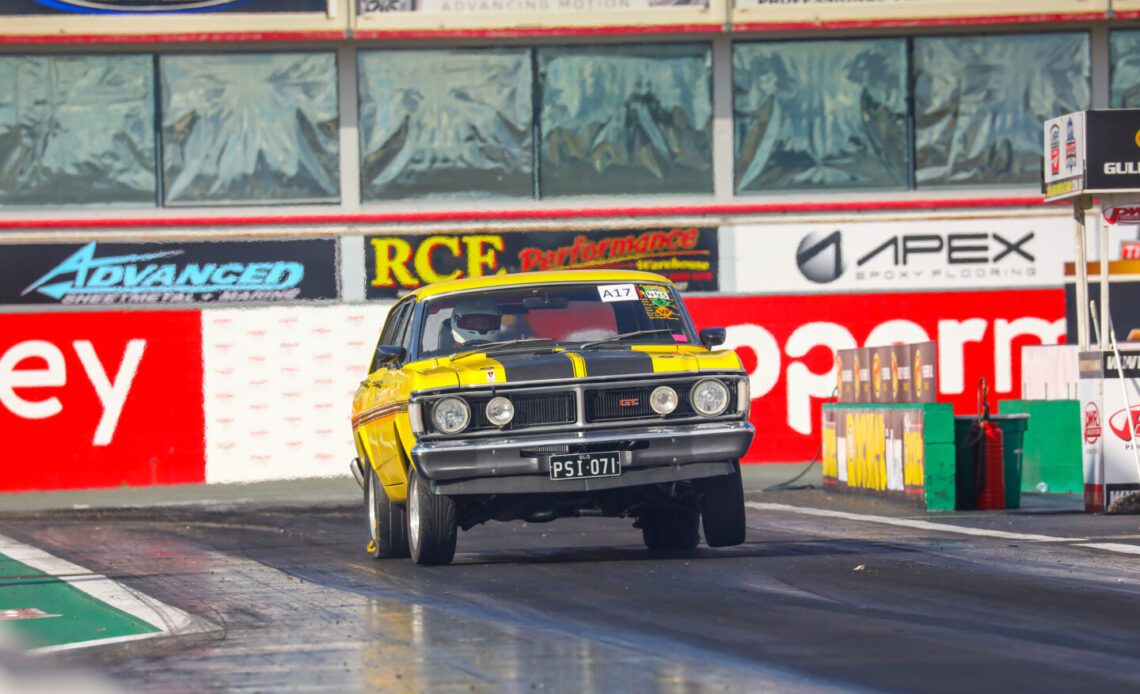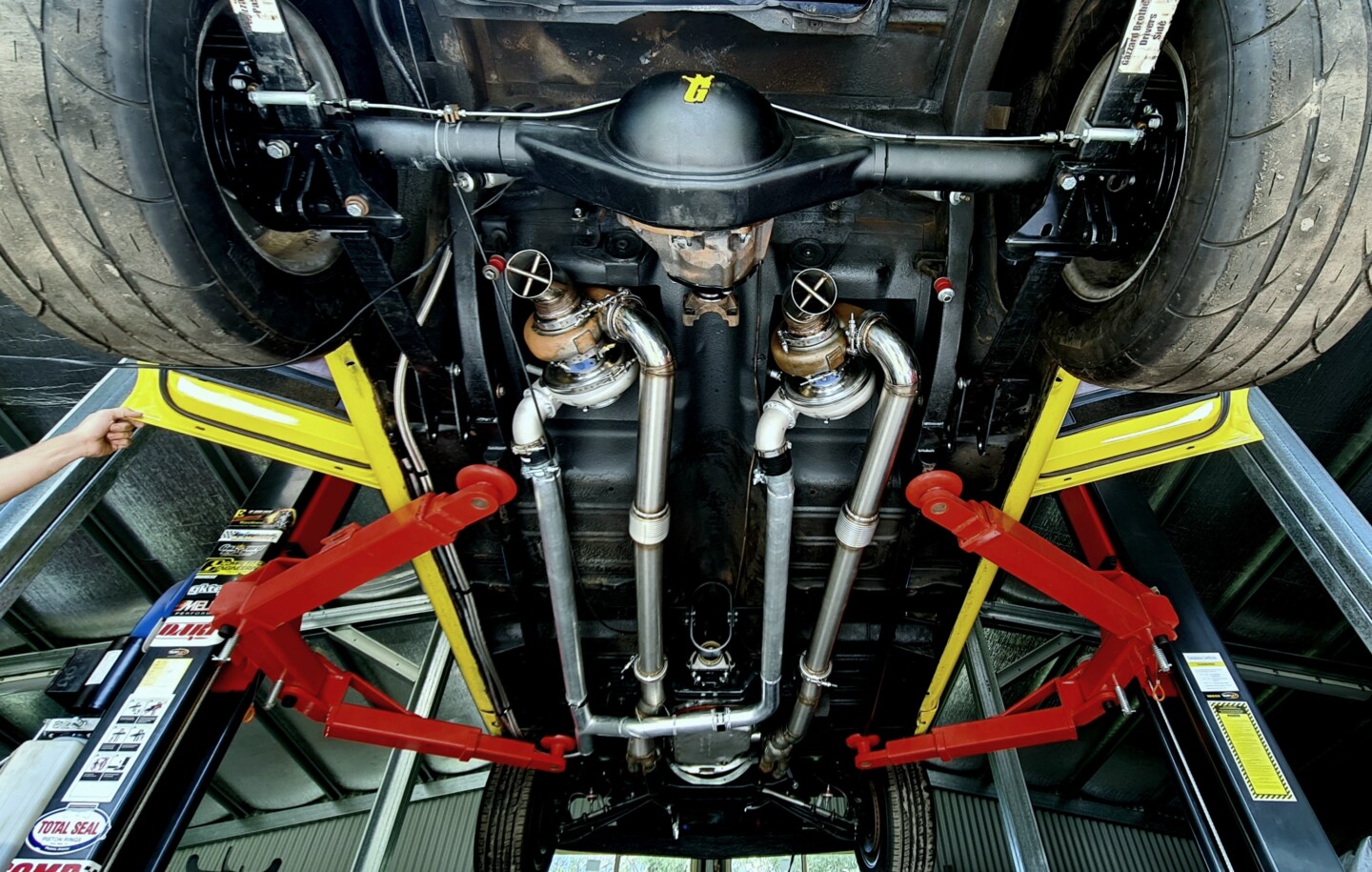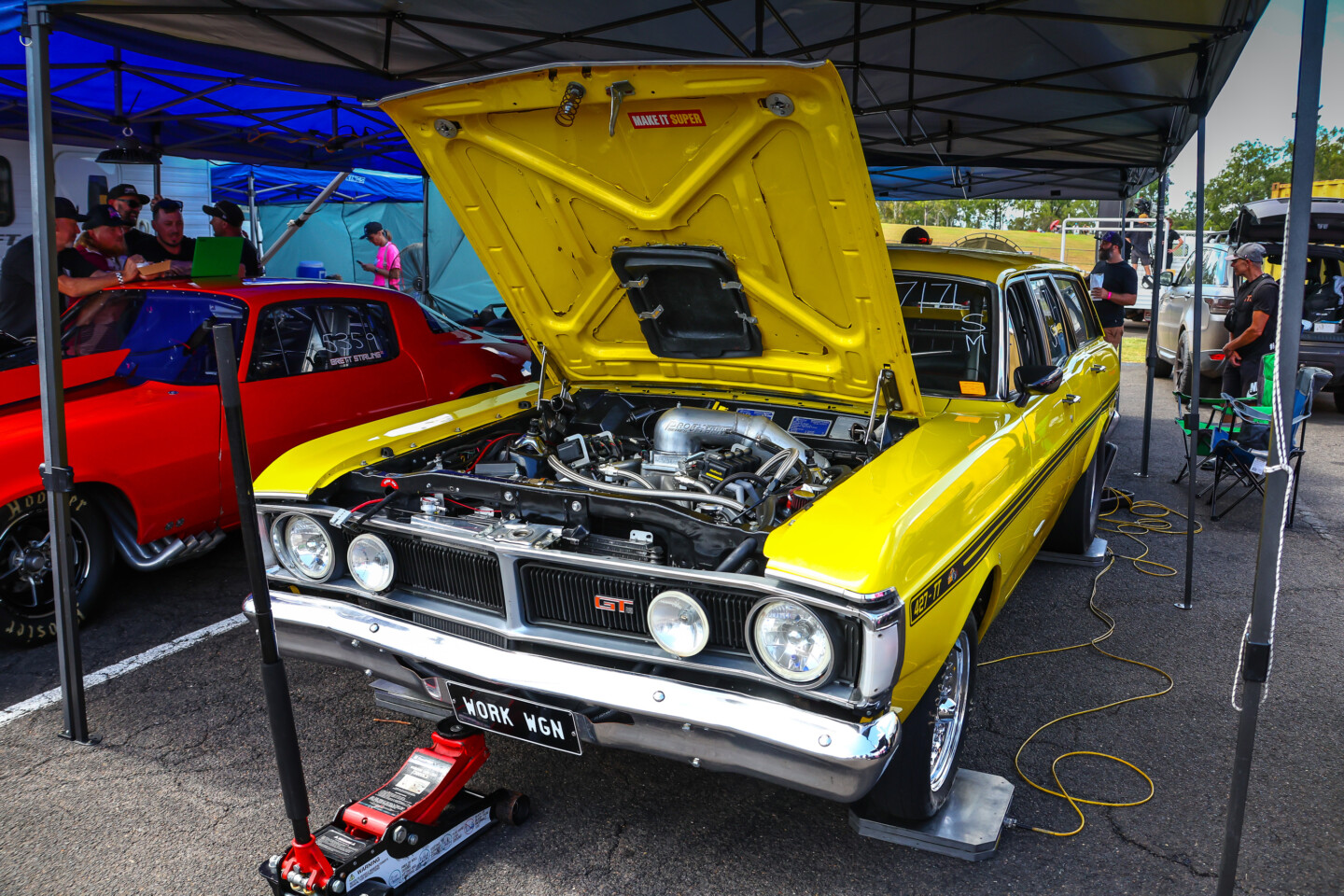Cars go 8 seconds in the 1/4-mile pretty regularly nowadays – and yes, we’re talking street cars — but few are as cool as Sketch Coleman’s 1971 Ford Falcon XY GT HO wagon. Even fewer probably do it with a home-made, rear-mount turbocharging system.
Coleman, who hails from Gold Coast, Queensland, Australia, has owned the Ford Falcon nearly 20 years and driven it as a street machine for most of that. He built it in his shed, or as those of us in the U.S. call it, the garage, and he also said that instead of his neighbor complaining about him working on it, he lent a hand and took care of a lot of the fabrication.
“While we had some down time, I played with the idea of a rear-mount turbo,” Coleman said of his path to boosting his Ford Falcon’s performance. “We started with the stock block and a small single [turbo], which worked better than expected. We ended up collapsing the bore when we pinched a ring, but I had the bug by then.”
As the engine was in need of repair, Coleman enlisted the services of Hi-Torque Performance in Arundel, Australia, to build a new powerplant. It’s based on a Dart Machinery Ford Windsor block that’s been poked and stroked to 427 cubic inches, but it was topped with 2V Cleveland-style cylinder heads for some massive airflow. The combination was purposely designed to handle plenty of boost.
With a new engine ready to handle whatever Coleman would throw at it, he decided to change the turbocharger to a big single G42-1400 that he mounted up behind the fuel tank. It worked well, but Coleman wasn’t happy that it topped out at 900 rear-wheel-horsepower due to back-pressure.
“The next version was to reduce back-pressure by moving to twin turbos and moving them in front of the differential,” Coleman said of his next iteration of the rear-mount turbocharging setup. “That helped us get 2:1 back-pressure at about 25 psi.”
Engine management is accomplished with a Haltech 2500 EFI system with EGT and knock sensors. Kye Knight provided the calibration, which allows the engine to rev to 5,000 rpm to build boost, and then drops the RPM back down to a lower RPM for the launch. Coleman noted that has dropped the spool time down considerably.
“It’s a heavy car with a cage, and everything fitted, it’s pushing 4,250 pounds, so it takes a bit to get moving,” Coleman noted of his wagon. “It’s running an Allfast Turbo 400 transmission — the weight and power just couldn’t…
Click Here to Read the Full Original Article at DragzineDragzine…



